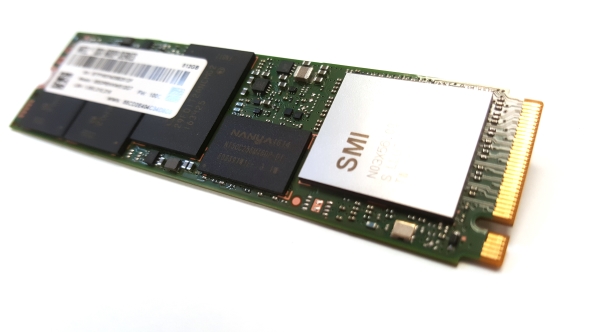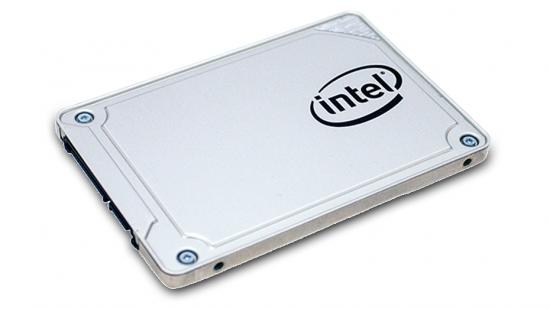Intel have launched the industry’s first solid state drive using 64-layer stacked memory, doubling the layers of the 3D NAND they introduced in their impressive SSD 600p drive.
Make the move to a modern solid state drive, you won’t regret it. Especially if you choose from our pick of the best SSDs for gaming.
The new Intel SSD 545 is, on the surface, a pretty standard mainstream SATA SSD. It’s a 512GB drive, running on the old-school hard drive interface giving it a the traditional SATA performance limitations. That means, in transfer speeds, the new drive is nothing to write home about; its 550MB/s and 500MB/s sequential read/write performance is about what we’d expect from a decent SATA SSD.
The big news is that the type of NAND flash memory they’ve used inside is a first. The stacked memory, which is becoming standard in the solid state market, was introduced to bolster the areal density of a drive, allowing manufacturers to increase storage capacity without necessarily adding in lots of extra chips.
Before the Intel SSD 545 dropped yesterday, the most layers we’d seen in SSD memory is the 48-layer proprietary V-NAND that Samsung uses for their SSD 960 Pro and Evo drives. By doubling the number of layers in their 3D memory Intel are able to produce good value, high-capacity SSDs which are still capable of performing at the limits of the SATA interface.
Before now you could either have lots of storage or decent SATA speed, not both. That’s exemplified by the Crucial MX300 drives. They use the same 32-layer 3D NAND Intel dropped into their 600p PCIe drives, but the high-capacity 750GB MX300 is, in the parlance of our times, dog slow. We’ve measured sequential read/write speeds of just 376MB/s and 392MB/s respectively.

So, how have Intel managed this doubling feat? Taller chips?
“Intel 3D NAND technology is a floating gate architecture that gives us the world’s best areal density today and provides scalability for the future,” Intel’s SSD guy, Rob Crooke, says. “This is based upon having a smaller cell size and by placing control logic under the memory array. Having the world’s best areal density means we can scale to large capacity and deliver more gigabytes per wafer.
“Our experience with designing this architecture into SSD solutions has enabled us to rapidly improve performance, power consumption, performance consistency and reliability with each generation.”
At the moment, the new drive is only available in the US, via Newegg, for around $180. That’s not exactly a bargain, but as this is a new technology, and probably not being built in huge volumes yet, we expect prices to tumble on the Intel 545 as time goes on. Intel are expecting “a fast ramp of bit supply based on 64-layer, TLC, 3D NAND by mid-2018,” according to Crooke.
But, as he also says, others have been talking about it, and Western Digital and Toshiba have certainly been doing that regarding the 96-layer 3D NAND they’ve been jointly producing.
The extra layers of their stacked memory will increase the potential chip density even more, but they’re also talking about shifting the technology towards four bits per cell (QLC) from the current three bits per cell (TLC) designs. That should help increase capacity even more, though it may also have a detrimental effect on endurance as the move from single, to double to triple level cells cut the individual cells’ lifespans.
Western Digital and Toshiba aren’t stopping there as they’re also planning on introducing the first terabit memory chips too. That will mean individual 1,024Gb slices of silicon packing 128GB of potential storage capacity in each of them. The new Intel 545, by comparison, uses 256Gb memory chips with 32GB per die.
